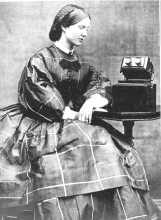Science
Irish women made significant contributions to science, especially as naturalists. During the nineteenth century most of these were middle or upper class women with access to family libraries, workshops and laboratories. Men had superior opportunities since women could not become members of learned societies or attend universities.
Many of the talented Victorian collectors were women,
... perhaps because of their eye for detail. Although women's records were seldom published in their own name, their contributions would be acknowledged by the male naturalists to whom they sent their specimens and observations - this was as close as women came to being published themselves.
Jane Hanly & Patricia Deevy in Stars, shells & bluebells, Dublin, 1997, p.43. |
Anne (1808-72) and Mary (1812-1898) Ball made outstanding collections of insects and algae and Matilda Knowles (1864-1933) collected lichens. Maude Delap(1866-1953) made a close study of jellyfish in her home-made laboratory on Valentia Island and Kathleen King (1893-1979) made a detailed study of Irish mosses. Annie Massy (1867-1931) became an internationally recognised expert on molluscs as did Cynthia Longfield (1896-1991) on dragonflies. Evelyn Booth (1897-1988) was an environmentalist long before institutions were set up for the purpose and compiled The Flora of County Carlow in 1979.
Skill at drawing, so essential to many branches of science in the past, was one of the traditional 'accomplishments' of girls' education. Ellen Hutchins (1785-1815) was a skilled botanical artist and Eileen Barnes (1910-1950) illustrated Robert Lloyd Praeger's definitive study of stonecrops and houseleeks.

Mary Ward
Birr Scientific Heritage Foundation |
Agnes Clerke (1842-1907), an important writer on astronomy, had a crater on the moon called after her while Margaret Huggins (1848-1915) and her husband William laid the foundations for the development of astrophysics. The Third Earl of Rosse built the largest telescope in the world at Birr in the mid nineteenth century with the help of the huge dowry brought by his wife Mary Rosse (1813-1885). She herself became one of Ireland's earliest photographers and her darkroom is the oldest surviving in the world.
Her husband's cousin Mary Ward (1827-1869) was an early pioneer of the microscope and died in 1869 - the year the first female undergraduates were admitted to a British university at Edinburgh. Mary died in one of the very earliest automobile accidents.
|
Sophie Pierce (1896-1939) was a pioneering aviator and an athlete who successfully presented the case for women to be allowed to compete at the Olympic Games.
The twentieth century saw women making major contributions to science as they gained access to education and as perceptions of their role in society modified and developed.
Questions
- Why was it difficult for most Irish women to make significant contributions to science during the nineteenth century?
- Suggest reasons why women's contributions to science were seldom published under their own names.
- What contribution did Mary Rosse's dowry make to science?
- 'Women who made outstanding contributions to science in the past shared certain characteristics.' Discuss.
Activities
- Design a chart or table showing the contributions of Irish women to science and technology.
- Research the work of any Irish woman scientist of note, past or present.
